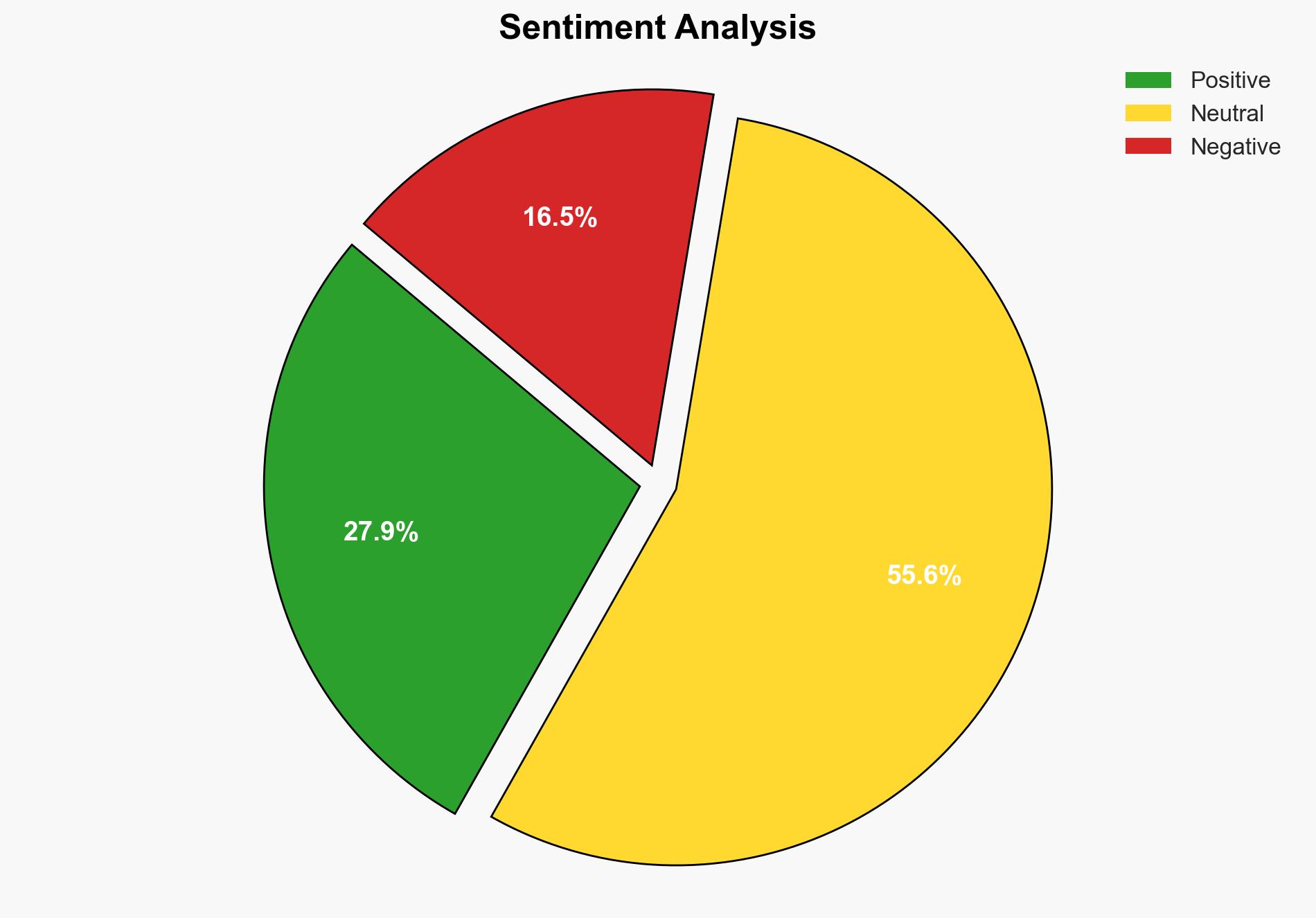Dealing with the issue of CISO stress – TechRadar
Published on: 2025-03-18
Intelligence Report: Dealing with the issue of CISO stress – TechRadar
1. BLUF (Bottom Line Up Front)
The role of CISOs is expanding, leading to increased stress levels due to heightened responsibilities and complex cybersecurity threats. This stress is impacting both individual well-being and organizational security postures. Without addressing these challenges, businesses face increased risks of cyberattacks and data breaches. Strategic recommendations include fostering a cybersecurity-aware culture, ensuring meaningful engagement with boards, and providing adequate resources and support for CISOs and their teams.
2. Detailed Analysis
The following structured analytic techniques have been applied for this analysis:
General Analysis
CISOs are under growing pressure as their roles expand to include strategic business alignment and oversight of complex cybersecurity environments. The increase in sophisticated cyber threats, such as ransomware and supply chain attacks, exacerbates this pressure. A recent survey highlights that many CISOs in the UK experience regular stress and overwork, which can lead to burnout and increased vulnerability to cyberattacks. High turnover rates among CISOs further strain organizations, contributing to a cybersecurity skills shortage and increased risk of data breaches.
3. Implications and Strategic Risks
The stress and burnout of CISOs have significant implications for national security, regional stability, and economic interests. Exhausted security professionals are more prone to mistakes, potentially missing critical alerts and failing to implement effective security strategies. This vulnerability increases the likelihood of data breaches, which can have severe financial and reputational consequences for organizations. Additionally, the high turnover of CISOs can disrupt organizational knowledge and hinder the development of robust security teams.
4. Recommendations and Outlook
Recommendations:
- Cultivate a culture of cybersecurity awareness, recognizing it as a core business imperative.
- Ensure direct and meaningful engagement between CISOs and boards to align security priorities with business objectives.
- Allocate realistic resources, including funding, technology, and personnel, to support cybersecurity teams.
- Promote work-life balance through policies such as mandatory vacation time and flexible work arrangements.
- Provide access to mental health resources and support programs for CISOs and their teams.
Outlook:
In the best-case scenario, organizations that implement these recommendations will see improved security postures and reduced turnover rates among CISOs. The worst-case scenario involves continued stress and burnout, leading to increased data breaches and financial losses. The most likely outcome is a gradual improvement in CISO well-being and organizational security as businesses adopt a multi-pronged approach to address these challenges.
5. Key Individuals and Entities
The report mentions significant individuals and organizations without providing specific roles or affiliations. Notable individuals include Splunk and EMEA, who are highlighted for their insights into the business impact of burnout and challenges faced by security teams.





